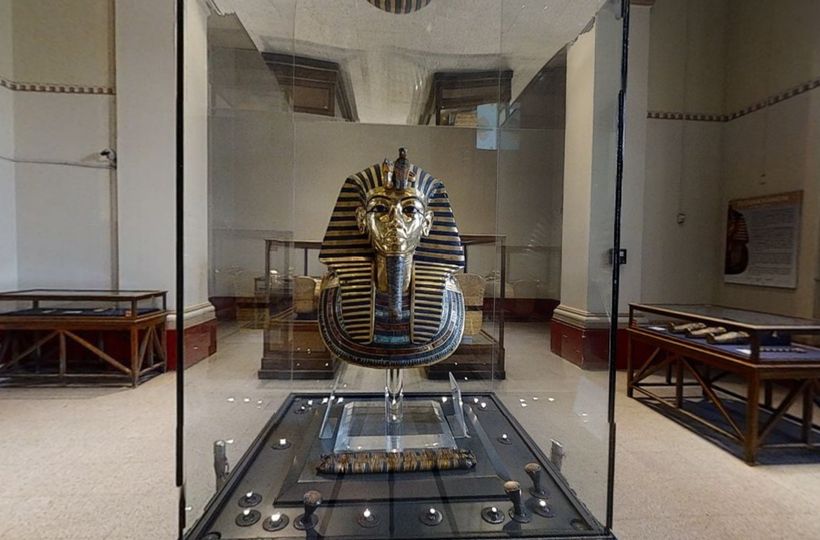Introduction to the Mask of Tutankhamun
The Mask of Tutankhamun stands as one of the most iconic symbols of ancient Egyptian civilization. Crafted over 3,000 years ago during the 18th Dynasty, this funerary mask was designed for Pharaoh Tutankhamun, who reigned from 1332 to 1323 BCE. Discovered in 1925 in the pharaoh’s tomb (KV62) by British archaeologist Howard Carter, the mask remains a testament to ancient Egyptian artistry and religious beliefs. It is now preserved in the Egyptian Museum in Cairo, where it continues to captivate the world.
Materials and Craftsmanship
The mask is primarily made of solid gold, which not only emphasizes its extraordinary value but also symbolizes the divine nature of the pharaoh, who was considered a living god. Its surface is inlaid with a variety of semi-precious stones, including:
- Lapis lazuli, symbolizing the heavens.
- Carnelian, representing the red hues of sunrise.
- Quartz and obsidian, used for the whites and pupils of the eyes, ensuring a lifelike gaze.
The intricate details, such as the symmetrical features of Tutankhamun’s face, the nemes headdress, and the protective cobra and vulture motifs (representing Upper and Lower Egypt), highlight the precision and artistic excellence of ancient Egyptian craftsmen.

Historical Significance
The mask was part of the burial rituals intended to protect the pharaoh in his journey to the afterlife. Ancient Egyptians believed that gold was the flesh of the gods, and the mask’s creation in this material reflects the pharaoh’s divine status. The inscriptions on the back and shoulders of the mask contain protective spells from the Book of the Dead, further emphasizing its spiritual importance.
Tutankhamun’s reign, though brief, is often remembered more for the treasures found in his tomb than for his political achievements. The mask, as the centerpiece of these treasures, provides a glimpse into the wealth, religious beliefs, and artistic sophistication of ancient Egypt.
Discovery of the Mask
The discovery of Tutankhamun’s tomb in 1922 was a landmark event in archaeology. When Carter opened the tomb, he described seeing “wonderful things” illuminated by candlelight. Among the treasures, the gold mask, unearthed three years later in 1925, was the most breathtaking. It lay upon the mummified body of Tutankhamun, a protective shield that had preserved the young king’s visage for eternity.
The tomb was the first nearly intact royal burial ever found in the Valley of the Kings, sparking worldwide fascination with Egyptology and providing unprecedented insight into ancient Egyptian burial practices.
Cultural and Symbolic Value
Today, the Mask of Tutankhamun is more than just an artifact; it is a symbol of ancient Egypt’s enduring legacy. Its beauty and craftsmanship have made it one of the most recognized images associated with ancient civilizations. For Egypt, it represents national pride, drawing millions of visitors to museums and exhibitions worldwide.

Analysis: Why Is the Mask Unique?
- Artistic Perfection: The symmetry and balance of the mask demonstrate the skill of artisans who worked with limited tools compared to modern techniques.
- Cultural Insight: The materials and motifs used reflect the deep connection between religion, politics, and art in ancient Egypt.
- Historical Context: As the burial artifact of a relatively minor pharaoh, the mask raises questions about the grandeur of tombs for more prominent rulers.
Conclusion
The Mask of Tutankhamun is more than a gold relic; it is a window into a civilization that valued the afterlife, believed in divine kingship, and achieved artistic and technical excellence. Its discovery was not just a moment of awe but a reminder of how the ancient world continues to shape our understanding of history, culture, and art.
From its gilded surface to its spiritual inscriptions, the mask remains a timeless representation of ancient Egyptian splendor.
